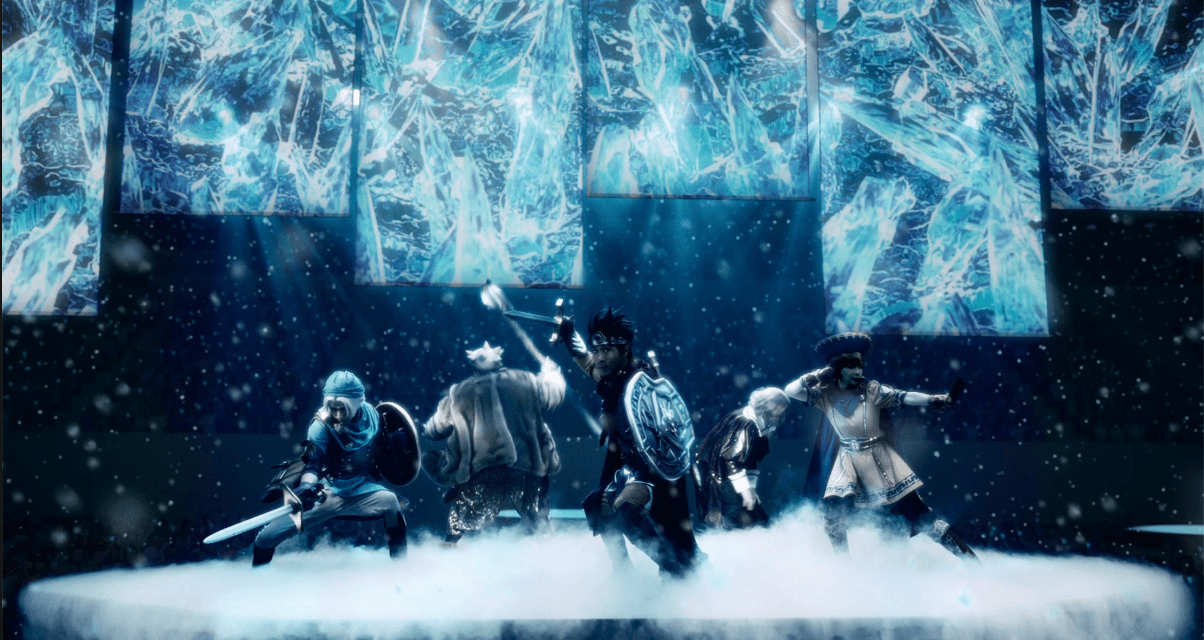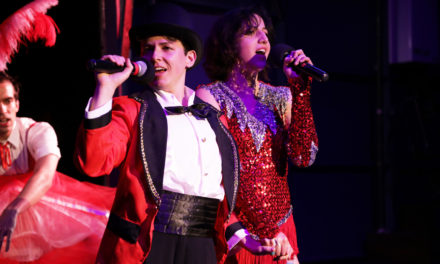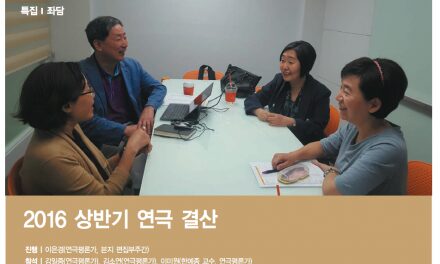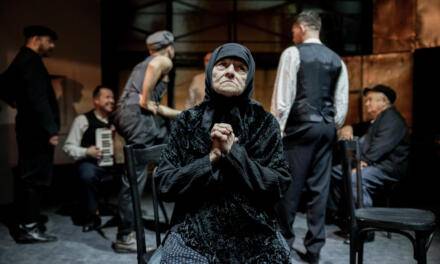For gamers and lovers of sheer theatrical spectacle alike, the summer’s hottest ticket seems sure to be for Dragon Quest Live Spectacle Tour, whose 40 shows nationwide are set to be attended by some 400,000 people—with everyone receiving a wristband enabling them to influence the onstage action.
As the role-playing video game Dragon Quest turns 30 this year, this show inspired by its producer Kenichi Yoda—and directed by Kahori Kanaya—is set to transcend any distinction between those flat-screen roots and the three-dimensional world.
Yet despite its cast appearing to have popped out of virtual reality onto its arena-sized stages erupting in lights, sound, color and special effects, the show follows a growing trend in Japan. In 2015, even age-old kabuki got in on the act, with a wonderfully hybrid production of Eiichiro Oda’s “One Piece,” the best-selling manga in history.
Recently, too, the so-called 2.5-D genre has taken off, with actors in musical plays such as “Sailor Moon” and “The Prince of Tennis” performing — sometimes in slow motion — like comic-book characters on manga-type sets as they replicate 2-D on stage, even down to “wow,” “pow” and “aargh” sound effects.
This time, the show mainly follows 1989’s “Dragon Quest III Soshite Densetsu e …” (released as “Dragon Warrior III” in 1992), the third of the game series’ 10 titles devised and still written and designed by the iconic Yuji Horii, with characters created by Akira Toriyama.
Just as in that game, the show’s drama centers around the hero Yuusha (Warrior), played by Tsukasa Matsuura, as he battles evil amid outlandish friends and foes.
At a press conference in late May, Matsuura — a street dancer who won the leading role against 700 others in an open audition — appeared with two of his co-stars, a cool lone swordsman named Terry (Shunsuke Kazama) and Funghoul (aka Demon Toadstool, Toadstool, Demonstool and Bigshroom), a red-capped mushroom character with sad eyes and a mouth full of fangs who’s played by an anonymous actor invisible inside his (or her) costume.
Saying, “I want the audiences to feel they’ve entered the game world with us,” Matsuura then turned to Yoda, a former producer with Nippon TV, who commented, “Matsuura can naturally blend into the character, so audiences will spontaneously rise to his presence and encourage him as a warrior mirror of themselves.”
In saying that, Yoda was echoing the show’s “You are the Warrior” slogan, which he said reflects his aim to create a new entertainment form in which audiences feel they are participating in the onstage world. That’s where those wristbands come in, because wearers can use them to “vote” from the in-show, game-like menus of plot twists, weapons and such that they prefer.
As well as that, before they go along to the show people can also visit its website to vote for any of the extra characters they find listed there who they’d really like to see on stage.
Meanwhile, the show’s fantastical, eye-popping sets and visuals are by English stage designer Ray Winkler, who has worked for Madonna, the Rolling Stones and Lady Gaga (to name a few).
What’s more, its characteristic Dragon Quest symphonic-style music by Koichi Sugiyama, the famous pop composer behind all the game series’ soundtracks, will also feature junior high school and high school marching bands from around the country.
So, whether you’re a console gamer or a theater buff, get set to see — and play a part in — what’s sure to be one of this summer’s most remarkable shows.
This post originally appeared on The Japan Times on July 26, 2016, and has been reposted with permission.
This post was written by the author in their personal capacity.The opinions expressed in this article are the author’s own and do not reflect the view of The Theatre Times, their staff or collaborators.
This post was written by Nobuko Tanaka.
The views expressed here belong to the author and do not necessarily reflect our views and opinions.


















